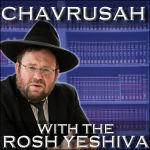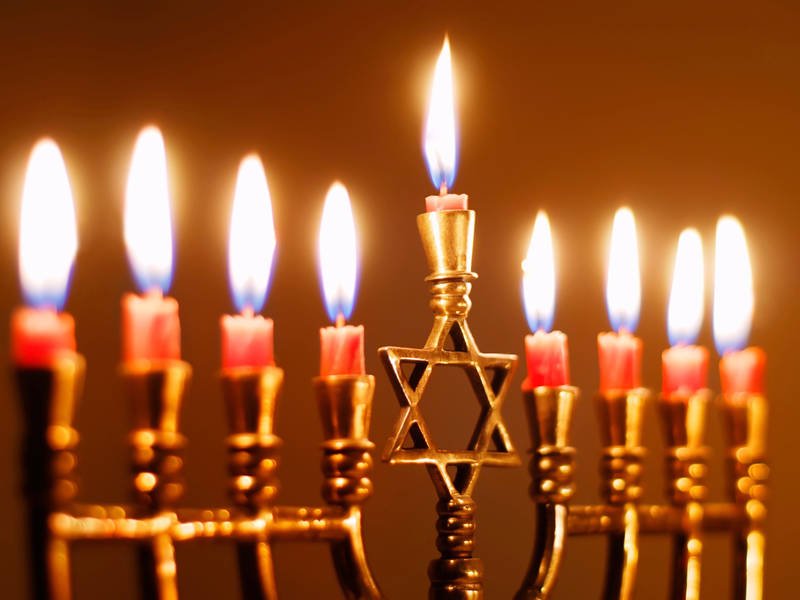Click here to download PDF

How do you add up inactions?
“Do not kill” and Do not commit adultery and Do not steal and Do not bear false witness against your neighbor and Do not covet the wife of your neighbor and Do not desire the house of your neighbor, his field and his slave and his maidservant, his ox and his donkey and all that belongs to your neighbor” (5:17-18). This string of connecting “Vav” s which in Hebrew is the equivalent of ‘and’ is one of the many differences between the version of the Aseres HaDibros as they are in this week’s Parsha as opposed to how they are spelled out in Parshas Yisro. What is the significance of this difference? More fundamentally, these statements do not make sense. We’re talking about not doing vices. You can add together positive actions or entities, but here we’re talking about non-actions. How do non-actions combine and add up?
Less is More?
Chazal point out that the final positive command of honoring the parents that directly precedes this string of interconnected negative commandments in this week’s Parsha has the additional words “Lemaan yitav lach” – in order that it shall be good for you” which it does not say in the version in Parshas Yisro. Chazal explain that the version in Parshas Yisro was that which was engraved on the first Luchos which ultimately broke, no one should say that goodness has ceased from the Jewish people. Therefore, the additional words “in order that it shall be good for you” was to be engraved only on the second Luchos, as these are the Luchos that endured, symbolizing that goodness will never cease from the Jewish people. This is counterintuitive. We know that the first Luchos were superior to the second ones in that the first Luchos even the stone was Divinely made, as opposed to the second Luchos that the stone tablets were earthly. Shouldn’t it be the other way around? That goodness and eternal endurance should be in that which is wholly Divine. Why were the second Luchos, which are on a lower level, merit to carry the message of goodness and to be eternal, never to break?
Tu B’Av & Yom Kippur
The holiday of Tu B’Av which is considered one of the most joyous days of the year, the only day comparable to it was Yom Kippur. Tu B’Av always comes out around the time that we read Vaeschanan, which has the version of the ASeres Hadibros as they are in the second Luchos that we received on Yom Kippur, which is one of the reasons that the Gemara says that Yom Kippur was such a joyous day for the Jewish people in addition to the forgiveness granted. The connection between Yom Kippur and Tu B’Av is deeper than Parshas Vaeshchanan coming out roughly around the time of Tu B’Av. Yom Kippur and Tu B’Av had a common practice in the times of the Beis HaMikdash, that the Jewish maidens would dance in the vineyards and it would be a way to promote matchmaking. What is the common denominator for which they had this common custom? Two of the many reasons for the joy of Tu B’Av indeed have to do with marriage and marriage possibilities. One was that on Tu B’Av they found a source to overturn the special injunction that was said regarding the daughters of Tzelafchad that they had to marry within their tribe so as their inheritance in the land of Israel should not wind up by another tribe. That was understood to be the case for future generations also, that when a situation like that would arise, a woman would have to marry within her tribe. On Tu B’Av they found a source to prove that that was a special halacha for the generation of the daughters of Tzelafchad but not for future generations. This ruling that was issued on Tu B’Av is called “the tribes were permitted to marry within each other”. A similar ruling issued on Tu B’Av was that they found a source to overturn how the tribe of Binyamin was ostracized and not allowed to marry within the other tribes of Israel. On Tu B’Av they found a source and issued a ruling that the tribe of Binyamin can marry with the other tribes and the ostracism was only for that generation. These two reasons can easily explain why they had the custom of dancing in the vineyard to promote matchmaking, but what is the common denominator between that and Yom Kippur?
Happiness in Av?!?
It is ironic that Tu B’Av in the middle of this month, which is the harshest month for us, and yet is one of the happiest days of the year. That irony is rooted in the fact that the month of Av was destined to be our greatest month and will indeed be that way in the future. The Sefer Yetzira says: “in the month of Av the letter ‘Tes’ reigns in hearing”. Rav Tzadok HaKohen of Lublin deciphers this cryptic statement as follows: The Gemara in Bava Kama says that he who sees the letter ‘Tes’ in a dream, it is a good sign for him because the first time the letter “Tes” is in the Torah is in the word “Tov”-good in the Pasuk “and Hashem saw that the light was good”. Reb Tzadok points out that the continuation of the Pasuk is “and Hashem separated between the light and the darkness”, which Chazal explain (see Rashi there) to mean that this light was so good that it wasn’t befitting to be revealed in this world for the wicked to enjoy, so it was separated and hidden for the Tzaddikim in the future. This is the theme of Av: it is so good that the goodness is hidden from us, like the hidden light, so therefore we don’t see it. We only hear about it as we are taught philosophically that the goodness of the month of Av is currently beyond our ability to see and comprehend. In a similar vein, I heard from my Rebbe, Maran HaGaon HaRav Moshe Shapira zt’l the following observation: In Hebrew, when we double the last letters of a word, it is to connote smallness. For example, “Katan” is small, “Ktantan” is extremely small. The word “E-l” literally means strong. The Torah calls idols “Elilim” to ridicule them as puny powers. My Rebbe observed that the month of Nissan is to date our most glorious month. It is the month of mercy and redemption. Nissan is called the month of “Aviv” which can be understood as” little Av”. Nissan with all its glory is considered “little” compared to what the month of Av should be and will be in the future. This connects again with the idea that the word “Tov” is only to be found in the text of the second Luchos which we read in this week’s Parsha. What are the philosophical explanations behind these observations?
Cracks in Reality
Hashem only does the good. So, where does evil come from? This question is further accentuated by the fact that by all of creation, it says “and Hashem saw it was good” and when Hashem finished creating the world at the end of the sixth day, “and Hashem saw all that He did and it was very good”. Where does the bad come from? My Rebbe, Maran HaGaon Harav Moshe Shapiro zt’l made a brilliant observation. In the second account of the creation of Adam, Hashem says, “Lo Tov” – it is Not good for man to be alone”. That is the point of origin that facilitates the existence of anything that we would call ‘not good’, separateness. This idea is explained at length by the Ramchal: anything “not good” is simply a lack. Death is a lack of life. Sickness is a lack of health. Poverty is a lack of resources. Strife is a lack of peace. But Hashem did not create a deficient world, as it indeed says by everything that He created (at least by the time he was finished), “Hashem saw it was good”, or even “very good”. That’s when all the pieces are together. All resources are where they are needed. The lack is created by fragmentation, When the needs and the resources that fill those needs are not aligned. “Tikun”, explains the Ramchal, is to pull the pieces of creation together in their proper alignment. When all the pieces are in their proper place, there is simply no room for anything bad to exist. It is truly as my Rebbe pointed out, anything “not good” starts with being alone and disconnected.
Mitzvos
The Nefesh HaChaim references the Chazal that says “what does Hakadosh Baruch Hu care if an animal is slaughtered by its neck (kosher shechita) or slaughtered by the back of the neck (which would render the animal non-kosher)? The Mitzvos were given “l’tzaref” – to purify the creations” meaning to say: The Mitzvos were given to us for our own benefit, to purify us, since Hashem himself has no needs. The Nefesh HaChaim points out that the word “l’tzaref’- to purify, can also be understood as ‘to join’. Mitzvos have the special metaphysical quality of aligning creation and that is what creates purity. Impurity is what settles in, in the gap that is “not good.” The Mitzvos pull the pieces together and that rids the world of all the impurities that settled in those gaps. He points out that the actual word “Mitzvah” command, could also be understood as being from the root “Tzavta”- togetherness, as the Mitzvos have the power to pull the pieces together.
Daas & Marriage
AS is well known, Mitzvos must be done by a “Bar Daas”- someone who is mentally competent. A boy is only Bar Mitzvah, when he reaches that level of maturity where he is assumed to have that mental competence. The word “Daas” – knowledge also means “to know in the Bibilical sense” which means connection, marriage. The real force empowering mitzvos that can only be done by a human being who is not only Jewish (only Jews are called “Adam”), but also mentally competent is “Daas”. That is the secret that Chazal understand the word “Daas” to refer to the order of Taharos (Shabbos 31) because the power of Daas that connects is also the purifying factor, as the Nefesh HaChaim pointed out.
The letter that acts as a connector and means the Hebrew equivalent of the word ‘and’ is the letter ‘vav’, which by no coincidence is a line that connects points and has a numerical value of 6. That is why man who has the mission of being a connector was created on the sixth day of creation, which makes the connection between all of creation and thus leads into the sanctity of the seventh, Shabbos. It truly goes back to my Rebbe’s observation, that all “non goodness” is in ‘man’ being ‘alone’ when (Jewish) mankind doesn’t use the capacity of “Daas” to bring connection to the world -that is what enables anything “not good”. The Zohar and the writings of the Ari pay special attention to the kings of Edom that” reigned and died” (end of Parshas Vayishlach) which refer to the forces of evil. But there is an exception, the eighth king, Hadar was married to Meiheitavel, the root of her name being ‘Tov’ and by him, death is not mentioned alluding that the Tikun for all that’s wrong can be fixed by “an act of marriage” which is “pulling the pieces together”.
Constructing a Conscience
With this we get a glimpse into the special quality alluded to in the text of the second Luchos that endured. The second Luchos have the word ‘Tov’ in them. Tov is only to be found when things are connected and that’s why immediately following the Pasuk that says, ‘and it should be good for you”, how we have the interconnected commands against transgression. In what way are they interconnected? In “Daas” as a value system. Their interconnection refers to man having a sense of moral conscience and balance that allows things to find their proper place. People are into “love” may not kill but they probably will commit adultery and take what doesn’t rightfully belong to them. People who are “unloving” and “cruel” may not commit adultery, but they will kill. The interconnection between all the negative commandments is to have a holistic value system of real “Daas” to always do the right thing at the right time and thus there will never be any vacuum in the spiritual organic unity of the cosmos.
Teshuva & Yom Kippur
We now can understand the commonality between Tu B’Av and Yom Kippur and what it all has to do with marriage. The word “chet” – sin also means to miss or be lacking. To sin is to create a misalignment that creates that lack. Teshuva simply eradicates those gaps that man made, and everything RETURNS (=TESHUVA) to its proper place after Teshuva has negated those man-made holes in reality. That is the secret of Yom Kippur. Cosmic unity is restored with the power of Teshuva, eradicating the man made gaps in reality and hence it is a day of unity that all Jews pray together and “we permit to pray with the transgressors” and it was a day of marriage and when we got those second Luchos, with their message of unity and goodness and restored moral values alluded to by the interconnection of all the negative commandments. The message is: No matter how low we fall, far far away from the level of the first Luchos, we can always fix what’s broken with Mitzvos and Teshuva and whatever we fix ourselves will be tightly united and therefore enduring and eternal. Even the greatest Perfections granted by Hashem for ‘free’ but not as a product of the connectivity of man’s “Daas” will not be lasting!
Purim
There was one other very joyous day of the year that will be one of the only holidays celebrated in the future and it is the twin of Yom K’purim – Purim. Esther used this idea of Jewish unity to defeat Haman. She called a communal fast and said, ‘gather together all the Jews in Shushan’. It was the power of that ingathering and coalescing of Jews that rid Haman of his place to stand. At the end of those three days, Haman was hanged. In the actual eradication of all the anti-Semites of that generation, the Megillah repeatedly says “Nikalu Hayehudim” – the Jews banded together and by no coincidence, the Talmud Bavli refers to the thirteenth of Adar, the day of war, as “Zman Kehilla lakol” – a time of gathering for all and by no coincidence, thirteen has the numerical value of “Echad”- one
Unity Shining Through
The universe is innately one united cosmos under Hashem. That hidden light enables to “see from one end of the world to the other” which is to see the cosmic unity. Tu B’Av is a day where the innate connection that there is, that is simply hidden because of our lack of “Daas” shines through. This hidden light that we only hear about (the letter ‘Tes’ in hearing) broke through on the 15th of Av and illuminated the eyes of the chachamim as how to close the most horrendous gaps in reality -the gaps within the Jewish people. When the gaps between the Jewish people are closed, it has a ripple effect of cosmic unity that rids evil of its foothold in the cosmos. On Tu B’Av, some of that ultimate goodness shines through, and therefore it is a day of unity and matchmaking.







